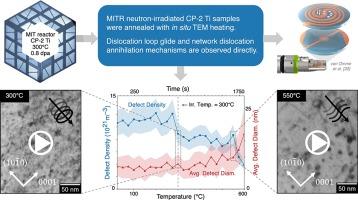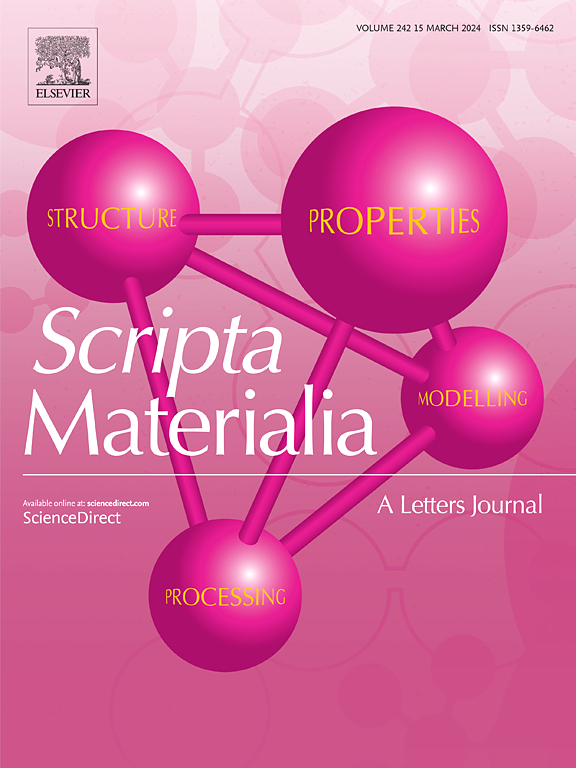In situ TEM annealing of neutron-irradiated Ti reveals a two-stage mechanism for elevated temperature radiation damage recovery
IF 5.6
2区 材料科学
Q2 MATERIALS SCIENCE, MULTIDISCIPLINARY
引用次数: 0
Abstract
Understanding how irradiation-induced defects evolve at elevated temperatures is of critical importance to predicting materials' behavior under steady-state and accident scenarios. However, such mechanistic insight into microstructural evolution is limited by the nature of ex situ annealing and subsequent imaging. Here we show direct observation and quantification of defect recovery in neutron-irradiated Ti using in situ transmission electron microscopy (TEM) annealing experiments. In agreement with our prior work, and at temperatures below the irradiation temperature (T = 300 °C), dislocation loops are observed to glide. At elevated temperatures (>500 °C), dislocation lines become mobile and promote significant recovery of the microstructure. These mechanisms challenge the established electron irradiation-based model for radiation damage recovery, which originally suggests dissolution of static defect clusters, and demonstrates the importance of in situ characterization in understanding defect evolution in irradiated materials.

中子辐照钛的原位TEM退火揭示了高温辐射损伤恢复的两阶段机制
了解辐照缺陷在高温下是如何演变的,对于预测材料在稳态和事故情况下的行为至关重要。然而,这种对微观结构演变的机制认识受到非原位退火和随后成像的性质的限制。本文采用原位透射电子显微镜(TEM)退火实验,对中子辐照钛的缺陷恢复进行了直接观察和量化。与我们之前的工作一致,在低于辐照温度(Tirr = 300°C)的温度下,观察到位错环滑动。在高温下(>500℃),位错线变得可移动,并促进微观结构的显著恢复。这些机制挑战了基于电子辐照的辐射损伤恢复模型,该模型最初提出静态缺陷团簇的溶解,并证明了原位表征对理解辐照材料缺陷演变的重要性。
本文章由计算机程序翻译,如有差异,请以英文原文为准。
求助全文
约1分钟内获得全文
求助全文
来源期刊

Scripta Materialia
工程技术-材料科学:综合
CiteScore
11.40
自引率
5.00%
发文量
581
审稿时长
34 days
期刊介绍:
Scripta Materialia is a LETTERS journal of Acta Materialia, providing a forum for the rapid publication of short communications on the relationship between the structure and the properties of inorganic materials. The emphasis is on originality rather than incremental research. Short reports on the development of materials with novel or substantially improved properties are also welcomed. Emphasis is on either the functional or mechanical behavior of metals, ceramics and semiconductors at all length scales.
 求助内容:
求助内容: 应助结果提醒方式:
应助结果提醒方式:


